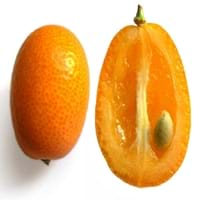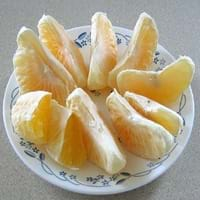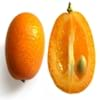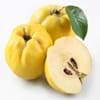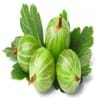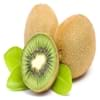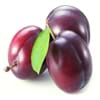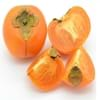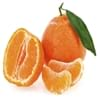Health Benefits
Cancer prevention, Cures gastro-intestinal troubles, Heart care, Increase in haemoglobin, Increases metabolic rate
Increases metabolic rate, Lower blood pressure, Protects against kidney stone formation
General Benefits
Anti oxidant properties, Anti-inflammatory properties, Healing of wounds, Helps in weight loss, Strengthens bones
Gives you energy
Skin Benefits
Anti-aging benefits, Reduces wrinkles, Treatment of dark spots
Skin cleansing
Hair Benefits
Promotes longer and healthier hair, Protects hair, Shiny hair
NA
Allergy Symptoms
Abdominal pains, Coughing, Diarrhea, Digestive Problems, Drop in blood pressure, Hives, Itching, Nausea, Tingling sensation in wrist and face, Vomiting, Wheezing
NA
Side Effects
Allergic reaction
Affects blood glucose levels, Decrease in blood sugar levels, Coagulation
Best Time to Eat
As a snack in the late afternoon, Don't consume at night and before bed, Eat the fresh ones, avoid mixing with any other foods, don't eat after meal., Morning time (before lunch), Strictly avoid empty stomach
As a snack in the late afternoon, Eat the fresh ones, avoid mixing with any other foods, don't eat after meal., Morning time (before lunch)
Vitamin A (Retinol)
Not Available
Vitamin B1 (Thiamin)
Not Available
Vitamin B2 (Riboflavin)
Not Available
Vitamin B3 (Niacin)
Not Available
Vitamin B5 (Pantothenic Acid)
Not Available
Vitamin B6 (Pyridoxin)
Not Available
Vitamin B9 (Folic acid)
Not Available
Vitamin C (Ascorbic Acid)
Vitamin E (Tocopherole)
Not Available
Vitamin K (Phyllochinone)
Not Available
Lutein+Zeaxanthin
Not Available
Water Content
Not Available
Calories in Fresh Fruit with Peel
Calories in Fresh Fruit without Peel
Not Available
Not Available
Calories in Frozen Form
Not Available
Not Available
Calories in Dried Form
Not Available
Not Available
Calories in Canned Form
Not Available
Not Available
Calories in Pie
Not Available
Season
Autumn, Winter
Dry
Varieties
Hong Kong, Marumi, Meiwa, Centenniel and Nagami
NA
Color
Orange, Red, Yellow
Orange, Yellow
Inside Color
Orange
Creamy Yellow
Soil Type
Clay, Sandy loam, Well-drained
Loamy
Climatic Conditions
Cold, Warm
Warm
Facts about
- The entire kumquat fruit is edible, except few seeds.
- The taste of kumquat skin is sweet while inner flesh is tart.
- There are some hybrid varieties of kumquats such as mandarinquats, orangequats and limequats.
- The name is derived from the word "ugly" refering to the it's unpleasant appearance, with rough, wrinkled, greenish-yellow rind, wrapped loosely around the orange pulpy citrus inside.
Top Producer
China
Jamaica
Other Countries
Brazil, Mexico, Spain, United States of America
NA, United States of America
Top Importer
United Kingdom
Europe
Top Exporter
China
Jamaica
Botanical Name
Citrus japonica
Citrus reticulata × Citrus paradisi
Synonym
Fortunella margarita
Tangelo, citrus tangelo
Subkingdom
Tracheobionta
Tracheobionta
Division
Magnoliophyta
NA
Class
Magnoliopsida
Unknown
Order
Sapindales
Sapindales
Species
C. japonica
C. reticulata × paradisi
Generic Group
Citrus fruit
Citrus fruit
Difference Between Kumquat and Ugli fruit
We might think that Kumquat and Ugli fruit are similar with respect to nutritional value and health benefits. But the nutrient content of both fruits is different. Kumquat and Ugli fruit Facts such as their taste, shape, color, and size are also distinct. The difference between Kumquat and Ugli fruit is explained here.
The amount of calories in 100 gm of fresh Kumquat and Ugli fruit with peel is 71.00 kcal and 45.00 kcal and the amount of calories without peel is Not Available and Not Available respectively. Thus, Kumquat and Ugli fruit belong to Low Calorie Fruits and Low Calorie Fruits category.These fruits might or might not differ with respect to their scientific classification. The order of Kumquat and Ugli fruit is Sapindales and Sapindales respectively. Kumquat belongs to Rutaceae family and Ugli fruit belongs to Rutaceae family. Kumquat belongs to Citrus genus of C. japonica species and Ugli fruit belongs to Citrus genus of C. reticulata × paradisi species. Beings plants, both fruits belong to Plantae Kingdom.
